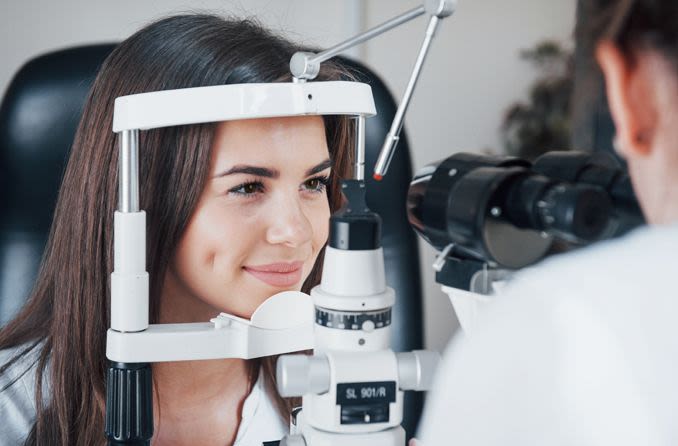Featured
Chronic eye problems, such as glaucoma, macular deterioration, and diabetic retinopathy, need recurring like maintain vision and preserve lifestyle. Efficient monitoring of these conditions entails a combination of clinical therapy, way of life changes, and routine monitoring. Below's how patients can take charge of their eye wellness and take care of persistent eye conditions effectively.
Among one of the most essential steps in managing chronic eye problems is sticking to your medical professional's suggestions. This consists of:
![]()
Utilizing proposed medications: Take eye drops, oral drugs, or injections as routed to control signs and symptoms or slow-moving disease development.
Going to routine exams: Constant visits to an eye treatment professional allow for prompt modifications to your treatment strategy and very early detection of changes in your problem.
Going through required procedures: Some conditions, like glaucoma or retinal disorders, might need medical or laser interventions to avoid further damages.
Your overall health and wellness dramatically impacts your eye wellness. Embracing a healthy way of life can minimize the threat of issues and enhance end results.
Eat a balanced diet regimen: Nutrient-rich foods, such as leafy greens, fish high in omega-3 fatty acids, and fruits, can support eye wellness.
Workout on a regular basis: Exercise boosts blood flow, which profits the eyes by guaranteeing they obtain appropriate oxygen and nutrients.
Manage chronic problems: If you have diabetes mellitus, hypertension, or other systemic conditions, maintain them controlled to avoid getting worse eye problems.
Stay clear of smoking: Smoking cigarettes increases the threat of establishing or exacerbating chronic eye conditions, including macular deterioration and cataracts.
![]()
Protecting against more damages to your eyes is vital in handling persistent problems:
Wear protective eyeglasses: Use sunglasses with UV security to shield your eyes from hazardous rays and reduce the risk of complications.
Limitation screen time: Extreme screen direct exposure can strain your eyes. Practice the 20-20-20 rule-- check out something 20 feet away for 20 secs every 20 mins.
Preserve proper lights: Avoid stressing your eyes by guaranteeing ample lights when reading or working.
Comprehending your problem encourages you to make enlightened decisions regarding your care. Ask your eye treatment provider about:
The progression and prospective results of your problem.
Symptoms and signs that call for instant attention.
Offered resources, such as assistance groups and academic products.
![]()
Coping with a chronic eye problem can be psychologically challenging. Think About:
Signing up with support system: Sharing experiences with others in similar situations can offer convenience and useful suggestions.
Talking with a therapist: Specialist support can aid you deal with the emotional impact of vision changes.
Conclusion
Taking care of persistent eye conditions needs a thorough and positive technique. By following clinical advice, adopting a healthy and balanced way of life, protecting your eyes, and looking for assistance, you can effectively browse the challenges of these conditions and maintain your vision. Regular communication with your eye care provider is essential to guarantee your management strategy remains effective and customized to your needs.
- Comply With Medical Recommendations and Therapy Plans
Among one of the most essential steps in managing chronic eye problems is sticking to your medical professional's suggestions. This consists of:

Utilizing proposed medications: Take eye drops, oral drugs, or injections as routed to control signs and symptoms or slow-moving disease development.
Going to routine exams: Constant visits to an eye treatment professional allow for prompt modifications to your treatment strategy and very early detection of changes in your problem.
Going through required procedures: Some conditions, like glaucoma or retinal disorders, might need medical or laser interventions to avoid further damages.
- Preserve a Healthy And Balanced Way Of Living
Your overall health and wellness dramatically impacts your eye wellness. Embracing a healthy way of life can minimize the threat of issues and enhance end results.
Eat a balanced diet regimen: Nutrient-rich foods, such as leafy greens, fish high in omega-3 fatty acids, and fruits, can support eye wellness.
Workout on a regular basis: Exercise boosts blood flow, which profits the eyes by guaranteeing they obtain appropriate oxygen and nutrients.
Manage chronic problems: If you have diabetes mellitus, hypertension, or other systemic conditions, maintain them controlled to avoid getting worse eye problems.
Stay clear of smoking: Smoking cigarettes increases the threat of establishing or exacerbating chronic eye conditions, including macular deterioration and cataracts.
- Protect Your Eyes

Protecting against more damages to your eyes is vital in handling persistent problems:
Wear protective eyeglasses: Use sunglasses with UV security to shield your eyes from hazardous rays and reduce the risk of complications.
Limitation screen time: Extreme screen direct exposure can strain your eyes. Practice the 20-20-20 rule-- check out something 20 feet away for 20 secs every 20 mins.
Preserve proper lights: Avoid stressing your eyes by guaranteeing ample lights when reading or working.
- Enlighten Yourself
Comprehending your problem encourages you to make enlightened decisions regarding your care. Ask your eye treatment provider about:
The progression and prospective results of your problem.
Symptoms and signs that call for instant attention.
Offered resources, such as assistance groups and academic products.
- Seek Emotional Assistance

Coping with a chronic eye problem can be psychologically challenging. Think About:
Signing up with support system: Sharing experiences with others in similar situations can offer convenience and useful suggestions.
Talking with a therapist: Specialist support can aid you deal with the emotional impact of vision changes.
Conclusion
Taking care of persistent eye conditions needs a thorough and positive technique. By following clinical advice, adopting a healthy and balanced way of life, protecting your eyes, and looking for assistance, you can effectively browse the challenges of these conditions and maintain your vision. Regular communication with your eye care provider is essential to guarantee your management strategy remains effective and customized to your needs.
Latest Posts
Safeguard Your Future with WyHy's Unique Certification Options
Published Apr 19, 25
1 min read
Top-Quality Auto Care for Any Car Brand: Your Go-To Service Center in Montclare
Published Apr 19, 25
2 min read
Industrial Roof Providers by Weathercraft Firms
Published Apr 19, 25
1 min read
More
Latest Posts
Safeguard Your Future with WyHy's Unique Certification Options
Published Apr 19, 25
1 min read
Top-Quality Auto Care for Any Car Brand: Your Go-To Service Center in Montclare
Published Apr 19, 25
2 min read
Industrial Roof Providers by Weathercraft Firms
Published Apr 19, 25
1 min read